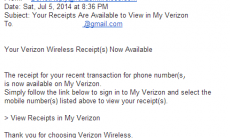The Web has forever changed marketing, but one of the ways that is often overlooked is its effect on traditional market segmentation. In a world where your customers are anonymous, how can you do market segmentation? It’s easy. Let customers segment themselves. That’s the subject of this month’s Biznology newsletter.
Marketers have traditionally segmented their customers into target markets to differentiate both their marketing messages and their product offerings themselves. Typically, these segments are decided based on demographics (characteristics of the customer, such as gender or age) or firmographics (characteristics of the customer’s company, such as industry or company size). The Web has challenged traditional market segmentation because Web visitors are often anonymous—marketers frequently don’t know their characteristics. So how can you segment Web customers?
You simply allow Web customers to segment themselves.
I can hear your objections: “Segment themselves? Doesn’t the marketer decide the market segments? The customers don’t even know what segments we put them in. How can they segment themselves?” Well, they can. The Internet allows customers to self-segment in ways never before possible.
One way of self-segmenting uses search. Every time people enter a few words into Google, they tell you what they are interested in. Subtle differences in wording identify different target segments. For example, a searcher who is looking for “lodging” is vastly different than one who searches for “hotel”—”lodging” searchers want a “bed and breakfast” or some other hotel alternative, which is why they search for a less-common word. These searchers are self-segmenting—they are dividing themselves into your target market segments.
Subscriptions provide similar self-segmentation possibilities. E-mail newsletters allow prospective customers to raise their hands and tell you they are interested in a certain subject. But some people are reluctant to give out their e-mail addresses because they don’t know what else you’ll send them. Web feeds (such as RSS) are a new way to subscribe to information with no loss of privacy—anyone using a blog reader (such as Bloglines) is already using Web feeds to subscribe to their favorite bloggers.
Self-segmentation goes beyond these marketing tactics, however. Because the Web is an interactive medium, anything your customers do has the potential to place them into a market segment. If you can get a customer to your Web site, every click reveals information you can use for segmentation. Every product viewed demonstrates interest.
Rather than revealing the customer’s demographics or firmographics for traditional market segmentation, however, you are instead learning what they are interested in. Customers self-segment based on their needs.
Traditional segmentation often ignores differentiation based on needs, because it is hard to know when someone needs something, but the Web makes it much easier to do. And it is very powerful. If you know that the customer is in the market for your product now, you have a much better chance of selling it.
You can even design your Web site to respond to your customer’s every click, using personalization techniques. If you’ve ever visited amazon.com, you’ve seen personalization in action. Anytime you look at a product or (even more telling) purchase a product, Amazon remembers what you did and designs your experience to suggest related products in the future. That’s personalization. It’s also self-segmentation based on needs—each Amazon customer creates a unique experience based on where they go and what they do on amazon.com.
But Web segmentation methods go farther than that. In classical marketing, the purpose of segmentation is to differentiate your entire offering—the communication about your product and your actual product. We’ve talked about differentiating the marketing communication, but how can the Web help differentiate the product itself?
At first, you might not see how the Web can differentiate your product. After all, you make what you make and the Web can only sell it. Which is true, up to a point. But the Web excels in making vastly complex choices simpler, so your Web site can offer hundreds or thousands of variations on your product that can be customized in ways that would be expensive or impossible any other way.
Think about how Dell sells laptop computers—they let customers “build” their own computers on their Web site. By providing an easy way of selecting how much memory or disk space is desired, Dell simplifies a very complex task and provides exactly what the customer requested. Talk about self-segmentation! Dell can reach customers that want a laptop built for games for under $1000—and show them exactly what they are looking for at the moment they want it. The Web is a great way to mask the complexity of a customized manufacturing process.
But you don’t need to have Dell’s customized manufacturing process to provide a similar experience to your customer. Retail Web sites can provide similar choices to customers without manufacturing anything. Look at how strikingly similar the experience can be atCNET. CNET allows customers to narrow down their choice of laptop using almost any characteristic (price, memory size, disk space, processor, brand, and many more) by listing all the choices and letting customers click on what they want.
The Web allows a nearly endless number of variations to be chosen, which is the equivalent of custom manufacturing. So, even though manufacturers and retailers may take different approaches, the customer experience can be very similar. An experience that formerly demanded a massive investment in custom manufacturing now needs not much more than a Web server.
So what’s the big change here? Market segmentation is becoming market personalization. You don’t target markets anymore; you target individuals personally. You do that by letting customers segment themselves.




